

- © 2003 - 2024 Dynamix Productions, Inc. Contact Us 0







Think your hearing is good? That notion is destroyed when you find out about all of the other sounds you don't hear.
Read More...
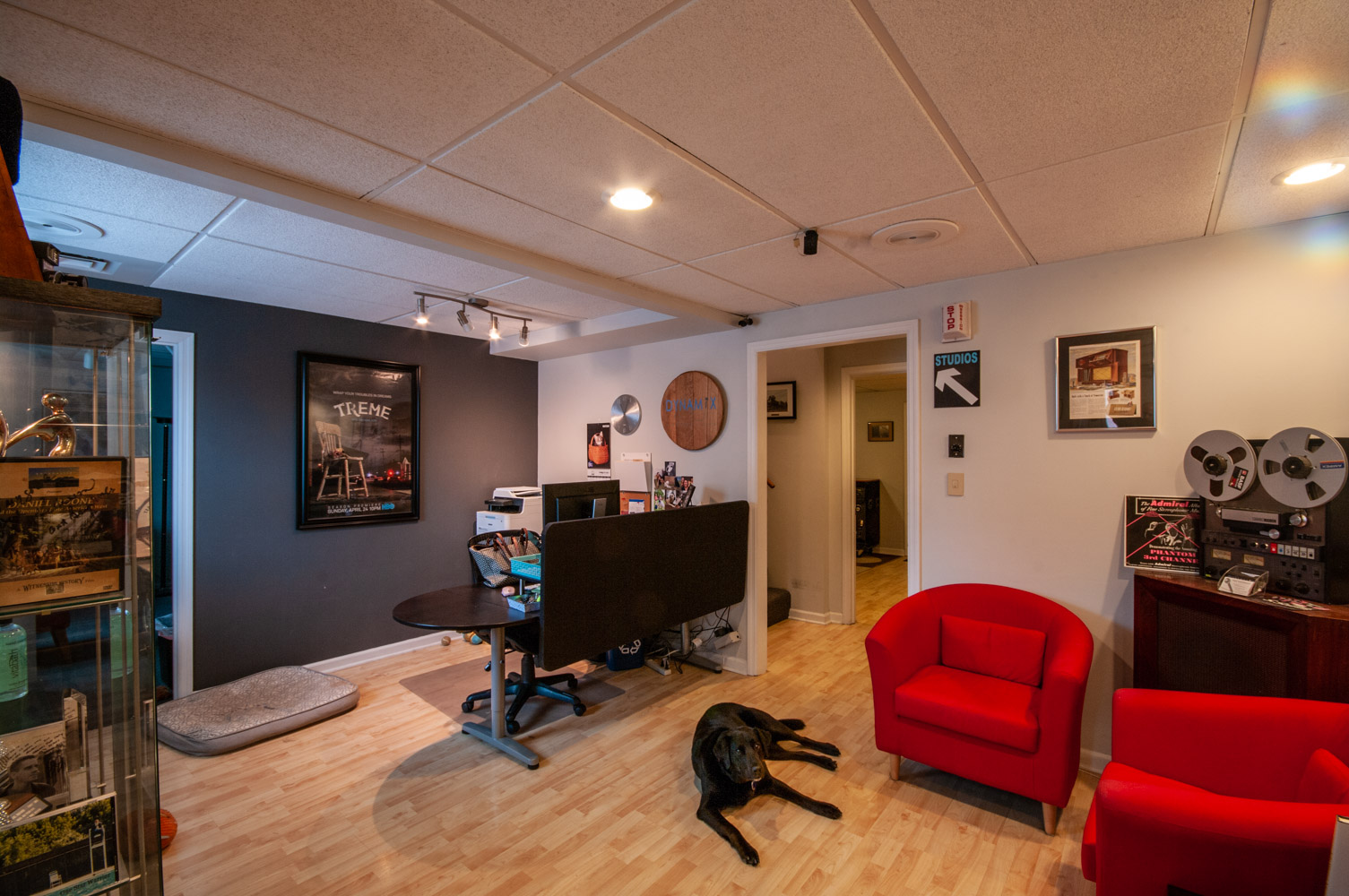

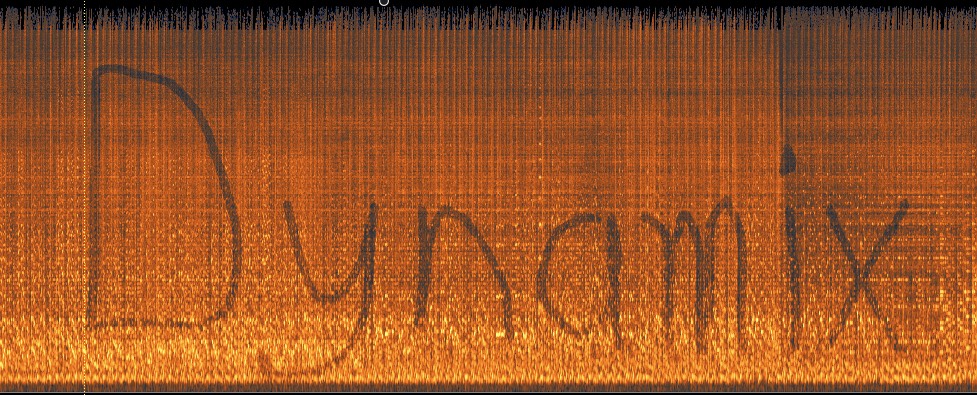

As terrible as war is, it often brings scientific discoveries to the masses in peacetime. One such discovery from World War II is the Sound Fixing and Ranging channel, or SOFAR channel for short. It's not a TV channel, but an ocean channel. In 1944, geophysicist Maurice Ewing discovered a hidden horizontal oceanic layer about 1,000 meters (3,300 feet) deep under the ocean's surface. It's sandwiched between warm, less salty and lighter upper waters, and cooler, more salty denser lower waters. What's unique about this layer is its ability to trap sound waves and channel them over vast distances.


PART I
The year '22 ushers in an exciting new technology. Here's what has been said about it:
"The newspaper that comes through your walls."
"Anyone with common sense can readily grasp the elementary principles and begin receiving at once."
"It will become as necessary as transportation. It will be communication personalized. There will be no limit to its use."

"Ding-dong, ding-dong
Ding-dong, ding-dong
Hark how the bells
Sweet silver bells
All seem to say
Throw cares away"
Peter Wilhousky / Mykola Leontovich
This time of year can be joyous, especially for holiday music lovers. Christmas tunes flow out of stores and TV sets, and holiday concerts fill December's weekends. But one carol, "Carol of the Bells," may be based on a centuries-old doom and gloom song.

Buford T. Justice: Breaker, breaker for the Bandit.
Bandit: Come on back, breaker.
Buford T. Justice: Bandit I got a smokey report for you. Come on!
Bandit: Well, talk to me good buddy.
Buford T. Justice: You got trouble comin...
Bandit: Well what's your handle son, and what's your twenty?
Buford T. Justice: My handle's Smokey Bear and I'm tail-grabbin yo ass right now!
Smokey and the Bandit (1977)
Just when you thought CB radio was dead, the Federal Communication Commission passed a rule that might have every "Smokey and the Bandit" fan yearning for another sequel. The FCC is allowing FM transmission on CB radio!

Captain of the 'Weser': What's it like down there, in a submarine?
Der Leitende: It's... quiet.”
Das Boot, 1981
Submarines need to be stealthy...and quiet. New technology like acoustic cloaking is on the horizon.

Mickey Mouse: Mr. Stokowski. Mr. Stokowski! Ha! My congratulations, sir.
Leopold Stokowski: Congratulations to you, Mickey.
Mickey Mouse: Gee, thanks. Well, so long. I'll be seein' ya!
Leopold Stokowski: Goodbye.
In 1940, before the world would be plunged into a half decade of devastating conflict, a larger-than-life cartoon creator teamed up with a wild-haired orchestra conductor and unleashed a fantastical film that would forever change the way we experience movies. The morning after the gala event at the Broadway Theater in New York City, The New York Times critic Bosley Crowther said, "The music comes not simply from the screen, but from everywhere; it is as if a hearer were in the midst of the music." Even with all the wondrous characters, vivid animation, and whimsical storytelling of this new film, it was the sound that stole the show.

"There is no reason that function should not be beautiful. In fact beauty usually makes it more effective."
Spock
Function and beauty can coexist, especially in headphone design.

"I hear the train a comin', it's rolling round the bend
And I ain't seen the sunshine since I don't know when."
Johnny Cash
"Folsom Prison Blues"
A train horn can be musical, loud and annoying, or even whimsical. But above all it's a communications device.

"If our condition were truly happy, we would not seek diversion from it in order to make ourselves happy."
Blaise Pascal
French mathematician, physicist, inventor, philosopher, writer and Catholic theologian
(1623-1662)
Are you working in a job that you love? Are you doing a skill that comes naturally to you? Can you imagine doing anything else? If you answered Yes, Yes, and...Yes, then you must be insanely happy. It could be healthy to daydream of doing something else, or even partake in different kinds of productive activities that are wildly different from your career. Studies of scientists have shown that the more varied their hobbies, activities, and other professional pursuits are, the more important and numerous their breakthroughs may be. Performing the same task over and over again becomes drudgery, no matter if you're a widget stamper in a factory or a recombinant DNA engineer in a lab. Our minds need diversion in order to focus when it's important.
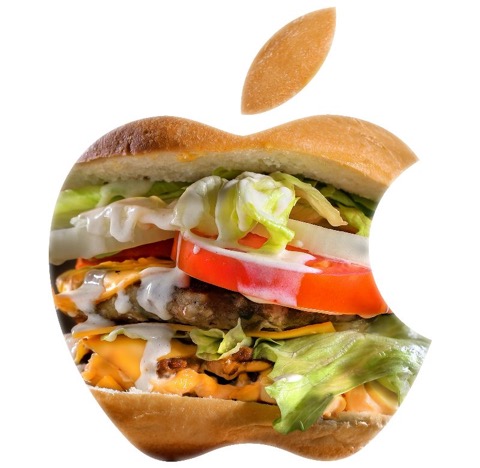
"Music's always been at the heart of Apple. It's deep in our DNA. We've sold Macs to musicians since the beginning of Macs."
Tim Cook
Twenty years ago this month, Apple officially launched OS X. Apple finally had a legitimate PC killer that would kick the Mac vs. Windows debate into overdrive. In 2001, many studios and video editing companies were already using Macs as the foundation for their digital production systems when OS X dropped, but it literally changed the game.
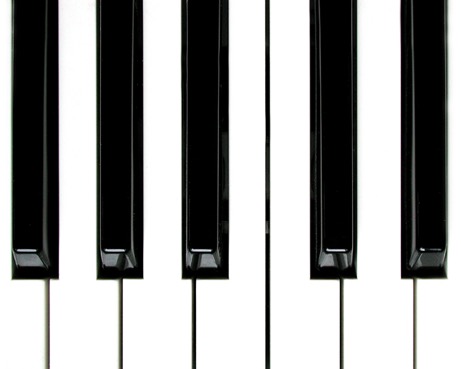
"Simplicity makes me happy."
Alicia Keys
Comedian Jim Gaffigan has a classic gut-busting routine about Hot Pockets. After expounding on the unsophistication of eating them, he envisions the meeting with the jingle writer:
Do love that jangle.
Do you think they worked hard on that song?
"What do you got so far, Bill?"
"Uh... uh... (sings) hot pocket?"
"Thats good, thats very good.
The jingle is almost as good as your "By Mennen"
Our daily life has us ingesting "jangles" and other ear worms that have become part of our subconscious. Maybe you've heard these simple sounds over and over again:
"Liberty, Liberty, Li-berty, Liberty"
"Nationwide is on your side"
"Double-A, TOOT-TOOT, M C O"
These sounds are almost as familiar as a logo like the Facebook F, the Micheline Tire man, or the Disney mouse ears. These are all trademarked logos and visual advertising devices. Sounds can also be trademarked as well.
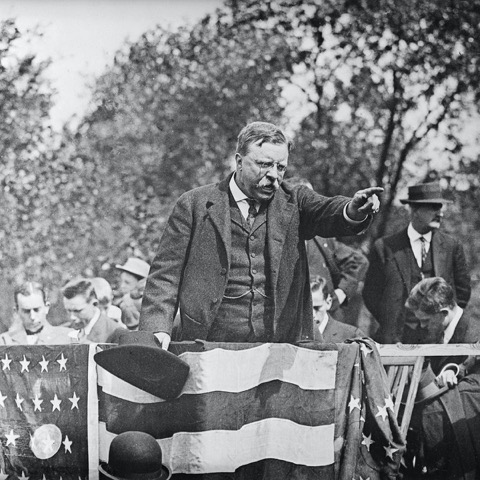
"Well-timed silence hath more eloquence than speech."
Martin Farquhar Tupper
For the first century of our nation's existence, a very select few ever heard their president speak. 130 years ago, technology changed that.
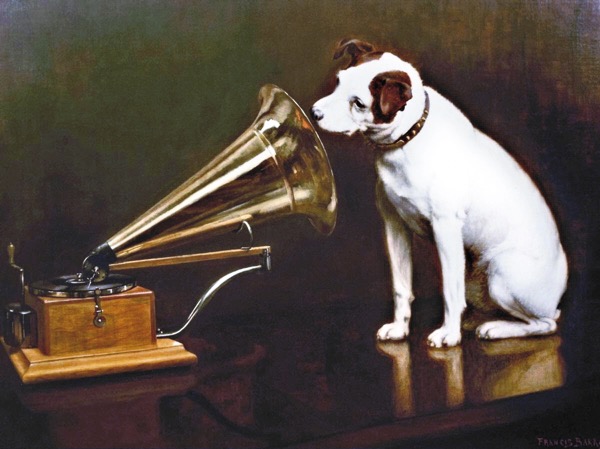
"It is easily overlooked that what is now called vintage was once brand new."
Tony Visconti
Which name will stick to a new technology? It's usually not the one given to it by the inventor.
Read More...
"I think reincarnation is possible. Hopefully, we all get recycled."
Christina Ricci
We all should recycle. A look at repurposing old audio gear into funky new uses. Plus find out the latest news from Dynamix Productions.

- Lt. Werner: What's going on? Why are we diving?
- 2nd Lieutenant: Hydrophone check. At sea, even in a storm you can hear more down here than you can see up there.”
Das Boot
In the near future, submarines might be using sound waves to communicate through ocean waves. Intriguing, but let's first look at the history of how submarines communicate, problems they face, and why this emerging technology may be the new wave of submerged communications.

"Call me a relic, call me what you will
Say I'm old-fashioned, say I'm over the hill
Today' music ain't got the same soul
I like that old time rock 'n' roll."
Bob Seger
Digital media is doomed to disappear at some point. Records may outlast hard drives, CDs, tapes, and other formats we haven't dreamt up yet. But what about stone tablets? I take a look at some of the oldest surviving forms of written music. You might be surprised what some of them contain.

"I got a chain letter by fax. It's very simple. You just fax a dollar bill to everybody on the list."
Steven Wright
William G.H. Finch had a crazy idea. He liked efficiency, and he liked news. He imagined a future that would merge those together for the average American. Americans like Joe and Jane. When they woke up in the morning, this crazy idea goes, a box in their parlor had just printed out the latest news onto paper with stories and pictures, ready to be poured over while eating their breakfast. Wait – that kinda sounds like the here and now. What's crazy is that this brainchild was born in 1933. William Finch saw a gap in the way Joe and Jane got their news. Newspapers, once the dominant source of news just a dozen years before, were relatively slow getting stories out compared to radio. Radio was instantaneous, but didn't have pictures like the newspapers. So he combined the two into a "radio facsimile" machine, or as they called it in the press, "radio printing."
Overnight, while Joe snored and Jane tossed and turned, radio stations transmitted data over their airwaves that sounded a lot like a fax machine does over a telephone line. A radio receiver was attached to a printer with a stylus that etched words, graphs, maps, comics, and pictures onto a roll of paper. These radiofax machines were small enough, light enough, and somewhat cheap enough to live in a family home. At least that was the plan.
The idea of printing electronic signals onto paper is not a new one. That endeavor goes all the way back to the 1840s with the telegraph etching a dot or dash onto paper. Crude pictures were being transmitted over wires in the 1890s. The first radio facsimile was patented in 1905 and was soon being used to transmit weather maps to ships at sea. By the early 1920s news services and amateur radio operators were transmitting pictures. In 1926 RCA was sending and receiving radio facsimiles between New York, London, San Fancisco, Berlin, and Buenos Aires by shortwave. Moving pictures, or television as we know it now, began to be developed in the 1920s as well. So maybe Finch's idea wasn't so crazy after all.
In the early 1930s, papers and radio stations were getting their news from such services as Transradio News Service that employed the teleprinter (similar to a teletype) and shortwave. Because phone lines were very expensive to lease during these days, news services were pushing the fairly new and rapidly advancing radio technology to the edge. Finch was part of this push while he worked for the International News Service. While he was building the first teletype service between New York, Chicago, and Havanna for INS, he was also experimenting with facsimile machines. He even invented a "talking newspaper" that printed a sound track on newsprint (like a movie's optical print) that played back as audio on a device in one's home. His patents would eventually number in the hundreds.
Finch quit the INS in 1935 and formed his own company, Finch Telecommunications Laboratories. He saw how large and complicated, not to mention costly, the facsimiles from big companies like RCA were. While they were commercially oriented, Finch was aiming at consumers. He focused on downsizing the technology while making it affordable and easy to operate.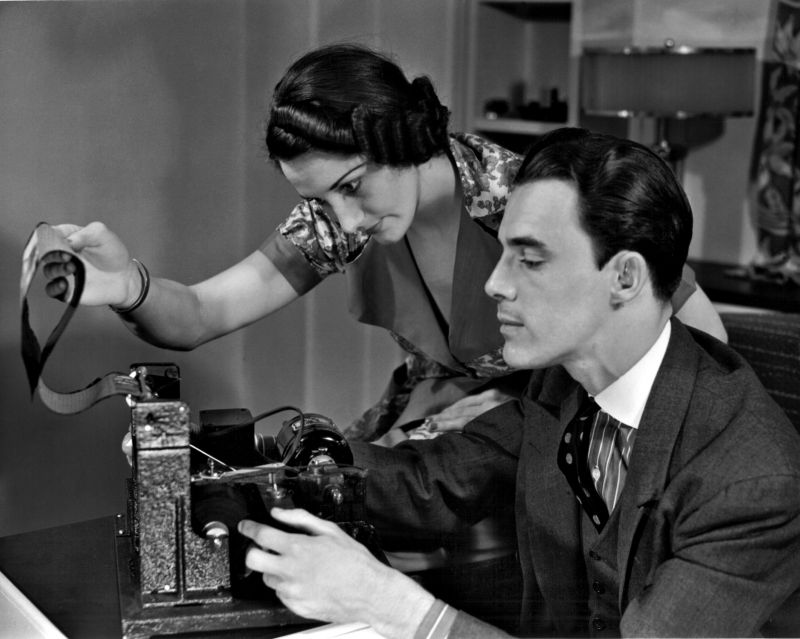
The Finch radiofax
When Finch introduced his first model, it cost $125, about the same as a top-of-the-line iMac would today. Not an easy purchase for a family in the middle of a depression, but Finch was able to convince radio stations to buy the receivers in bulk for the earliest experiments in 1937. Finch hoped that positive press from the experiments and demonstrations like those during the 1938 NAB Conference would create demand.
RCA sure noticed and scrambled to produce a consumer version of their machines. They spearheaded the first regular transmissions of newspaper by radio by 1939 in St. Louis. RCA's receivers were double the size and price of Finch's but printed standard-sized newspaper font. General Electric and Western Electric also took notice and started development of their own versions. By the end of that year, nine stations in the U.S. would be regularly broadcasting radiofaxes. The new technology would receive even more attention at the 1939 World's Fair in New York.
Then the king of affordable radio, appliances, and cars got in on the act. Powel Crosley, Jr. owned "The Nation's Station," WLW, and built radios to listen to his Cincinnati Reds on (if you weren't driving there in a Crosley automobile), so naturally he was interested in capitalizing on another crossover technology. Crosley licensed the technology from Finch and figured out how to make it even more affordable at $80 each. He called his radiofax the Reado. It was marketed as "Radio for the Eyes as well as the Ears."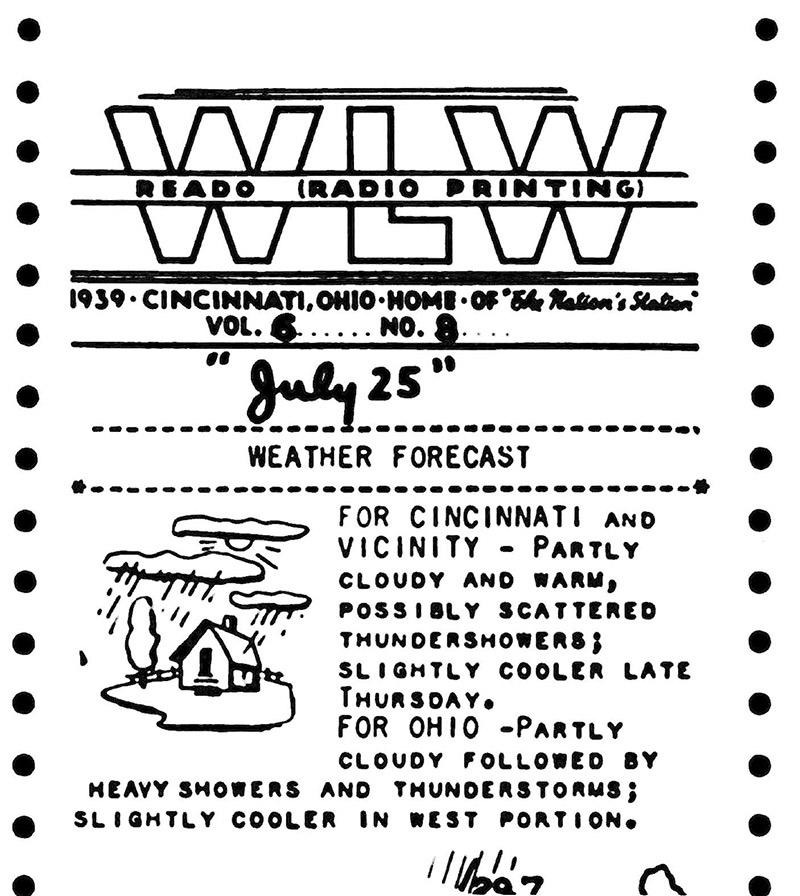
A Reado printout
The momentum seemed to be building as more newspapers and radio stations began "radio printing" the news. A 1940 ad for the Crosley Reado, giddily predicts:
The art of transmitting pictures and other printed material by radio will advance. Nothing shall hamper its growth. Pictures of world events, cartoons, comic strips, news flashes weather maps, market reports, everything of a visual nature will soon be coming over the air. It is not anticipated that facsimile will directly compete with the newspapers. It will unquestionably be and continue to be a source of flash news rather than detailed mass printed material which can only be supplied by the newspapers and periodicals. Facsimile does not directly compete with sound broadcasting. On a separate channel, it will unquestionably be available as an augmenting service, providing a visual record of material other than music and sound being produced for your perusal whether you are present or absent.
But with all the hype, there were too many forces working against Finch, Crosley, and RCA. The first was that the Finch and RCA models were incompatible – exactly like the VHS/Betamax war several decades later. The AM radio signal had to be nearly perfect or else whole pages of content would not print, and those that did took too long. FM radio was gaining ground, and television was capturing the public's imagination. And last but not least, the country was still in a depression. By the end of 1940, only three facsimile stations were still transmitting. After World War Two, Finch and others tried reviving and improving the technology, even getting part of the new FM broadcast band reserved for facsimile transmissions for a short time. But television was on a fast track to America's hearts and wallets.
William Finch continued to develop facsimile technology after the war, envisioning news and information being delivered directly to consumers over standard telephone lines. He invented a color fax device. But none of these ideas took hold and his company went bankrupt in 1952. To add insult to injury, RCA took over many of its patents. William G.H. Finch died in 1990 at the ripe old age of 93, still working on inventions. His relentless push to improve and miniaturize facsimile technology led to what we now know as the FAX machine.
Today, radiofax is still alive. NOAA and other international weather services still supply weather charts via shortwave radio to sailors. Typically broadcast daily on four frequencies, a ship out of satellite or internet range can tune a portable shortwave radio to a given frequency, send the earphone output to a computer's audio input (or a purpose-built marine fax machine), and receive weather charts and other vital navigation information. It's amazing to think that a sailor's safety today can be credited to William Finch's crazy idea nearly 90 years ago.
“There comes a time in a man's life when he hears the call of the sea. If the man has a brain in his head, he will hang up the phone immediately.”
Dave Barry
Something people have been overpaying for since forever are music knockoffs. In the 1800s hucksters would blatantly rip-off sheet music; early records were either re-recorded or re-pressed from originals; and illegally replicated compact discs filled up warehouses for decades. Savvy consumers usually know fake from fact, but in this digital only world, it's getting harder to tell. But help is on the way.
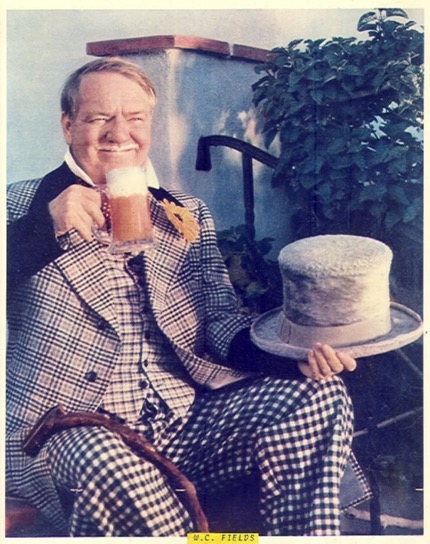
"Once, during Prohibition, I was forced to live for days on nothing but food and water."
W. C. Fields
100 years ago, a restrictive law popularized a new American art form. PLUS, find out what's been going on in the studios of Dynamix Productions.

"I got rhythm, I got music, I got my man
who could ask for anything more?"
George and Ira Gershwin
Do animals have rhythm?
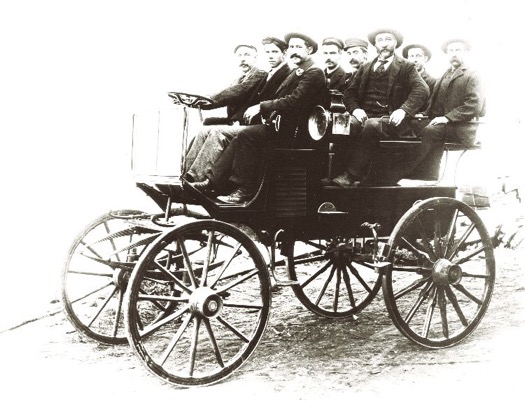
"These fellows blow their horns just to see the people jump, I believe."
Chicago Mayor Carter Harrison, 1902
At the turn of last century, the automobile was poised to overtake the horse as the preferred mode of personal transportation. But there were detractors to the coming sea change. Much as we see driverless cars as a potential danger today, "horseless carriage" opponents saw the drivers themselves as dangerous.
Read More...
"Again and again, the cicada's untiring cry pierced the sultry summer air like a needle at work on thick cotton cloth."
Yukio Mishima
Recording location audio outside can be challenging at best. The video team wants an exterior shot because architecture or a landscape in the background can add to the image. But alas, there are often unwanted sounds like cars, HVAC blowers, and other manmade annoyances that we must work around. There's one sound though that is nearly impossible to eliminate, fix, mask, hide, or yell-at-to-be-quiet. It is guaranteed to ruin almost any exterior recording in the summer: the mating song of the cicada.
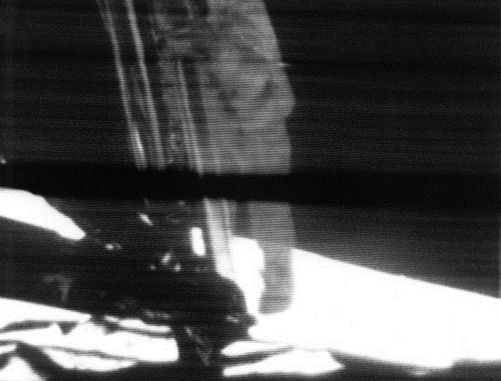
"It's an interesting place to be. I recommend it."
Astronaut Neil Armstrong commenting about the moon
Every time I hear the timeless phrase Neil Armstrong uttered while stepping on the moon, I can't help but remember the first time I heard it. It was 50 years ago at about 11:00 PM on July 20, 1969. I was eight-years-old and had fallen asleep waiting for them to get out of their strange looking space craft. Our family was vacationing in a cabin on a lake in southern Ohio, and Dad had hauled our portable black-and-white TV from home. We had a lot of trouble getting any TV stations out in the country on that little box. I seem to remember him fiddling with the rabbit ear antennas and positioning all of us at different places in the room like chess pieces so the picture wouldn't flutter.
So, rubbing my sleep filled eyes, I watched a white Gumby-like figure bounce down a ladder and onto the surface of another world. The significance wasn't lost on a boy only eight years into life. Then Armstrong delivered what is probably the shortest, yet most famous speech in all of human history, "That's one small step for man...." We strained not only to see him, but to hear him. "One giant leap for," he continued, "m_-_//_ _nd." What? There was static at the end covering the last word. What did he say? Piece of crap TV we had. We always had to bang on its top to keep it tuned to a channel.
As much as I want to blame it on our TV, the static was in the broadcast from the moon. Even CBS's Walter Cronkite had trouble understanding it during his live coverage. “I didn’t understand,” he said, "'One small step for man.’ But I didn’t get the second phrase.” Communications had been a problem for much of NASA's early years. In the minutes leading up to the horrific fatal fire aboard Apollo 1 during a ground test, the crew was having trouble communicating with Mission Control. “How are we going to get to the moon if we can’t talk between three buildings?," Gus Grissom barked into his headset.
As the lunar module (LM) Eagle descended to the moon's surface that day, Mission Control in Houston had trouble receiving data from it. Just like Dad moving us around for a better TV signal, a switch to and reposition of a different antenna on the LM solved it. But they were beaming voice and data 240,000 miles, so there were bound to be problems. The Eagle had a variety of radios for different activities and purposes, but LM to earth transmissions while on the surface primarily used microwave that combined voice and data, at about the same rate as a telephone modem in the early days of the web. They also employed UHF simplex transmissions, but mostly between the LM and command module that Michael Collins was circling in overhead. Once Armstrong and Buzz Aldrin were out of the LM, they deployed a larger dish antenna and pointed it at Houston for a stronger signal than what we heard Armstrong mutter his famous words on.
At the time, we all really knew what Armstrong said if we thought about it. But it seemed like there was another word missing. Armstrong always insisted that he said "That's one small step for (A) man,...," but nobody heard it at the time. The focus had always been on the scratchy part at the end of the speech. That one small word, "a," changes the meaning of the speech, if taken literally. "One small step for MAN" implies all of MANKIND in 1960s parlance, but we knew that he meant "one man" or "one mere human." Granted, Armstrong was exhausted and running on adrenaline at the time he said it. But studies have shown that it's entirely possible that he did say "A man," just very quickly. What's the last word? NASA's transcripts have the speech as "that’s one small step for (a) man,” so officially he said the "a." Maybe.

"Radio is a hungry monster that eats very fast."
Tyler Joseph
Everything today seems to be sped up. We speed to work, we speed to pick up the kids, we speed home, we speed around the kitchen, we speed watch TV, we speed listen to podcasts, we speed, speed, speed...then we speed sleep so we can get up and do it all over again. And as if on cue, much of what we watch and listen to is also sped up.

"It was easier just to say it out on a tape than trying to write it because it will take a lot of writing paper in order to get it straight."
Private First Class Frank A. Kowalczyk
Long Binh Post, Vietnam, 1969
Back when it was expensive, or impossible, to call someone long distance, friends and family members would send messages on records and tapes to each other through the mail. Not only was it more affordable, it was a more personal way to stay in touch with each other and have some fun doing it. When I digitize some of these audio letters for customers, and feel like I'm transported back in time that a way that a letter can't take me.
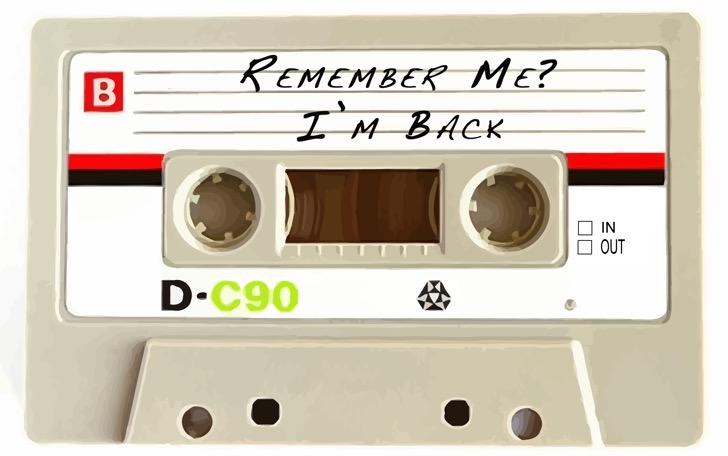
"Nostalgia is not what it used to be."
Simone Signoret
Record stores all over America will be opening their doors on April 13th for National Record Store Day. But cassettes are sneaking in through the back. These portable petite plastic packs from the past now have their own Cassette Store Day each year in October, and they're winning over some fans that also shop for vinyl. In fact, annual sales of music cassettes were up 23% in 2018, and 70% since 2016. Artists and studios are rethinking this ancient format and not only re-releasing albums popular during cassette's halcyon days, but new music as well. What's with the retro rewind?
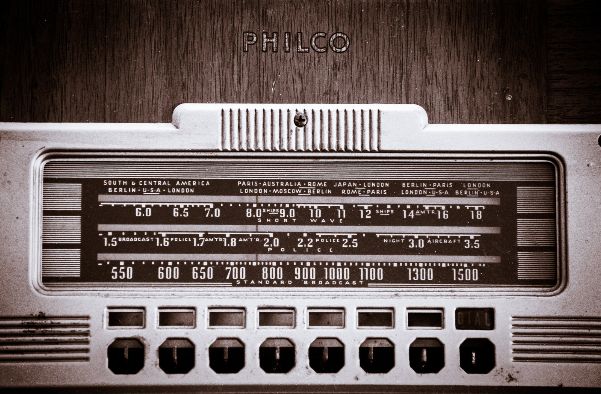
"TV gives everyone an image, but radio gives birth to a million images in a million brains."
Peggy Nooman
The recent presidential elections in Nigeria and Senegal stirred fond memories of my childhood. Specifically the "sounds" of Africa I remember growing up with. I haven't had the good fortune to go to Africa, but I've listened to it from afar. In the 1960s and 70s, radio was perhaps at its peak. AM radio stations played the hits, FM radio played the albums, and CB radios were in kitchens and cars. A lot of homes also had a shortwave radio. Today it's the internet that ties us all together. Back then, CBs connected us with our friends, AM and FM connected us with the country, and shortwave connected us with the world.
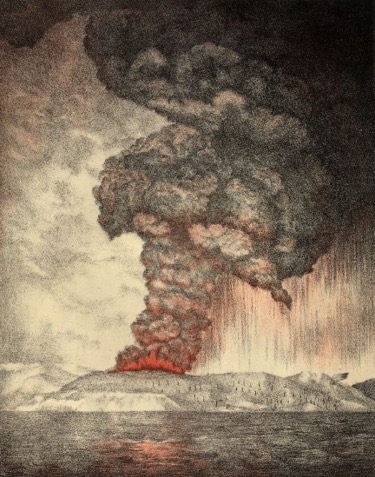
My favorite saying is, 'If it's too loud, turn it up.'
Tori Amos
You often hear the phrase "The shot heard 'round the world," referring to the first shot fired of the American Revolution in Lexington, Massachusetts. Or for us baseball fans, Bobby Thompson's dramatic game-winning home run when the New York Giants beat the Brooklyn Dodgers for a trip to the 1951 World Series. Both of these pale in comparison to the 1883 explosion of the Krakatoa volcano. Dubbed as the loudest sound in history, it was also the farthest traveled.
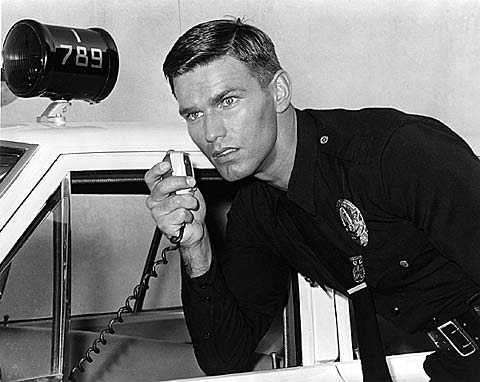
10:40 p.m. “I got about 2,000 college students coming from Walnut Street to 30th to Center City.”
10:46 p.m. “It’s endless, chief. Endless.”
11:11 p.m. “They’re on top of trash trucks. There is to be no one on top of trash trucks, guys.”
11:14 p.m. “We have multiple people on Broad Street swinging on light poles.”
11:20 p.m. “Climbing the trash trucks at 13th and Market.”
11:25 p.m. “I need to get the fire extinguisher out of my trunk. I got a fire on Broad Street just south of South. Someone lit a Christmas tree on fire.”
Philadelphia Police radio transcripts after the Eagles won the 2018 Super Bowl
Do you remember the old movies from the 1930s when a radio in a police car would blare out "Calling all cars! Calling all cars!" The diligent policemen would zoom away in their car with the siren screaming. The dispatcher had no idea if the radio cars heard the frantic call because two-way radios were uncommon and expensive. So from the late 1920s until after World War II, most police departments relied on their cruisers having radio receivers only. Today, police use digital radio systems that carry data, video, and other information.
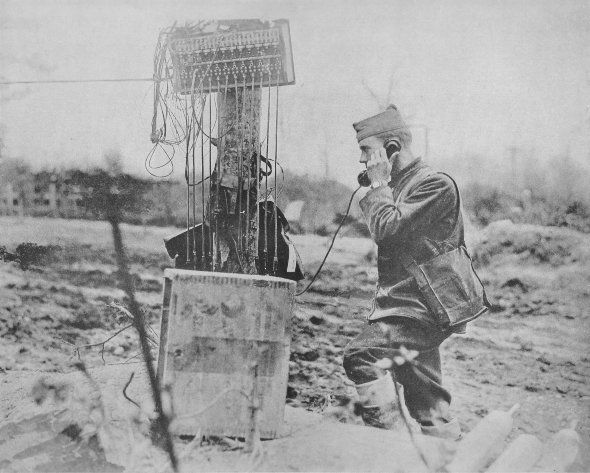
"Hostilities will cease along the whole front from 11 November at 11 o'clock."
Marshal Foch, the French commander of the Allied forces via radio atop the Eiffel Tower.
This week marks 100 years since the end of the war to end all wars, known today as World War One. In 1918, on the 11th hour, on the 11th day of the 11th month, 1,500 days of fighting came to an end. The armistice was agreed upon just six hours earlier in a railway car halfway between Paris and the Western Front. What's remarkable is the speed at which most troops were informed of the impending armistice. This war, like in so many other ways, forever changed the world of communication.
Older, established methods of communications such as semaphore, flags, signal lamps, pigeons, and dogs were used throughout the war. But electronic communications, especially radio, rapidly advanced from wagon loads of equipment to merely bulky gear by war's end. Wired telephony and telegraph were still the primary communications devices, but there were major advances in those as well.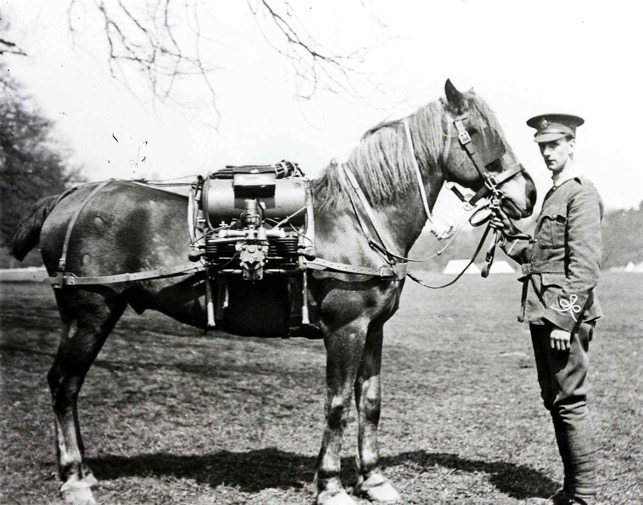
Some inventions that sped up the miniaturization of radios included the valve (vacuum tube), amplifier, and the superheterodyne receiver (a more precise way to tune in distant frequencies). As radios grew smaller, they moved around with the troops on the ground, went to sea, and took to the air. Transmitters were placed in dirigibles and airplanes for pilots to relay back battle conditions. By the end of the war two-way communications between airplanes and the ground, and from pilot-to-pilot was possible. To give pilots freedom, and to reduce the sound of the airplane's engines, a cap with a throat microphone and earpiece was developed. This was the world's first hands-free device. To control chaos at busy military airstrips, the British developed the earliest air traffic control.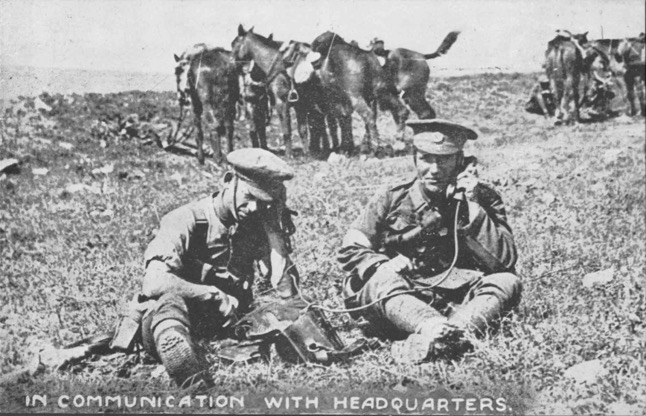
But most ground communications was through wires. Many, many men lost their lives running cable in battle zones. The lines were often severed during bombings, requiring deeper trenches to bury them. Ladder-type runs were also employed to ensure that if one strand were broken, the other parallel strand would carry the signal. And early on many of these signals were intercepted by the enemy through induction from the electromagnetic field. Thus, insulation was invented to shield orders from enemy ears. Enemies could also tap in to lines to pick up morse code transmissions, so the fullerphone, a quasi-encryption device, was employed. This electronically changed the way morse code signals were relayed and required special equipment on each end.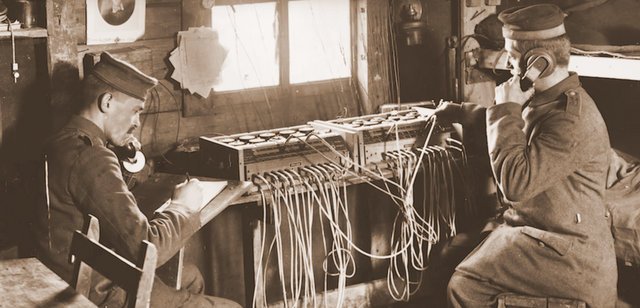
Voice transmission was quicker than morse code, but noisy lines and battle sounds tended to obscure the messages. A phonetic alphabet was perfected to aid in distinguishing letters. For instance, my name Neil would be spelled "November Echo India Lima" in the current alphabet. It changed many times over the years and varied between countries and military branches until it was standardized in 1957. That's probably good. During WWI my name would be phonetically spelled "Nan Easy Item Love." Sounds more like a proposition than military communication.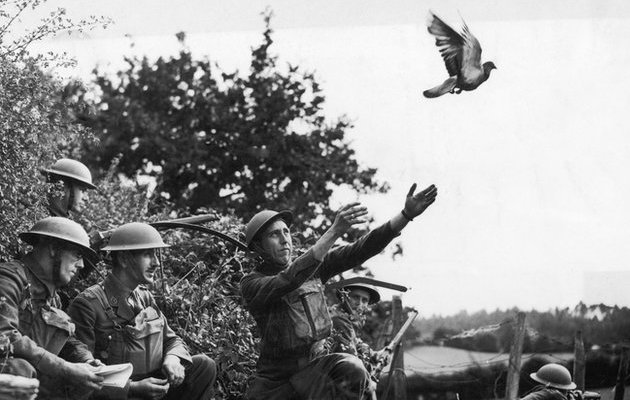
The advanced communications developments weren't enough to prevent catastrophes, however. The famous "Lost Battalion" had to rely on their last carrier pigeon to stop friendly fire on their position. Cher Ami, shot down by German troops, returned to flight and delivered the desperate message to headquarters that pleaded "For heavens sake stop it." Cher Ami would be saved by Army medics despite being shot through the breast, blinded in one eye, and losing a leg. She was awarded many honors and is on display at the Smithsonian Institution.
As with most prolonged wars, technology advances at meteoric speeds, often benefiting civilization during peace time. Some inventions and improvements that came out of WWI that trickled into everyday use include the wristwatch, the compact camera, drones, zippers, stainless steel, plastic surgery, the sun lamp, and portable x-ray machines.
A hundred years seems so far off when you think about how far technology has advanced since then. But a lot of us have a direct connection to it. My grandpa fought in the last major battle alongside 1.2 million other doughboys in the Meuse-Argonne Offensive - just a month before the armistice. He was badly injured and disabled by bullets, shrapnel, and gas. A day earlier in a nearby forest, American hero Sergeant Alvin York singlehandedly killed or captured an entire German machine gun battalion. Since this Veterans Day marks the end of World War One, let's salute the soldiers who put their lives on the line running cable, hoisting giant antennas, lugging heavy equipment into battle zones, flying in airplanes and dirigibles to radio back information, and crawling through battlefields to telegraph enemy positions. And let's not forget the pigeons, dogs, and horses that continued a long tradition of carrying battle communiques and equipment in hellish conditions.
More information on technology and communications in World War One
First World War communications and the tele-net of things.
A history of first World War technology in 11 objects
Telecommunications in war
The science of World War I communications
Northern Ireland, the first to hear of the armistice via radio from Paris
A PDF of WWI military communications from the US Marine Corps Museum
The final hours of World War I
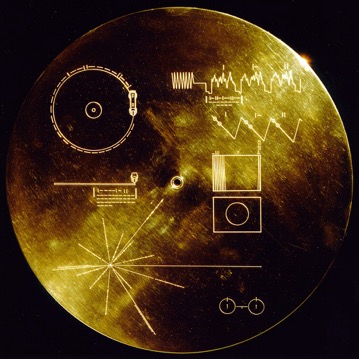
"Hello from the children of Planet Earth"
From the gold records aboard the twin Voyager spacecraft
Vinyl is the format that won't die. It'll probably still be around after humans are extinct and our sun has gone supernova. Perhaps in eons, Voyager spacecraft with the golden records aboard will meet distant stars and future vinyl lovers. But in this eon, people will not stop pushing vinyl to its limits. Mad scientists and crazy artists like putting something other than music on it - or in it. More on that later.
Read More...
"Treat the recording studio as a laboratory for conceptual thinking — rather than as a mere tool."
Brian Eno
When I was young in the...cough...60s and 70s, the only real glimpses I got inside a recording studio was through television and movies. There was a smattering of documentaries and behind-the-scenes footage of studios and radio stations. I was always straining to see the control board and tape machines, or marveling at the cavernous studio on the other side of the glass. It was absolutely riveting to peek inside them and see how a record was made. The 8-foot long mixing console was often shot through a fisheye lens. Long-haired musicians were sunk down into a couch smoking cigarettes (?) and listening to their masterpiece. And there were close-up shots of that big fat 2-inch tape rolling past the heads of the recorder.
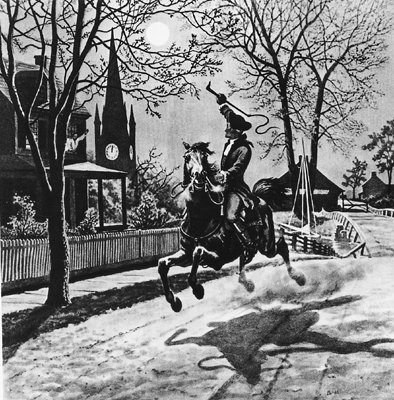
"The people will waken and listen to hear
The hurrying hoof-beats of that steed,
And the midnight message of Paul Revere."
Henry Wadsworth Longfellow
What did Paul Revere's famous midnight ride from Boston to Lexington sound like in April 1775? If you were there, you might recognize the approaching horse as a Narragansett Pacer mare. This once popular breed of horse, now extinct, was known for its ambling gait: a smooth riding four-beat gait that is faster than a walk, but slower than a canter or gallop. You might also notice the calm surroundings interrupted occasionally by crow calls, trees rustling in the wind, or the occasional farm dog barking at the stranger barreling down the rough dirt road. Just someone in a hurry.
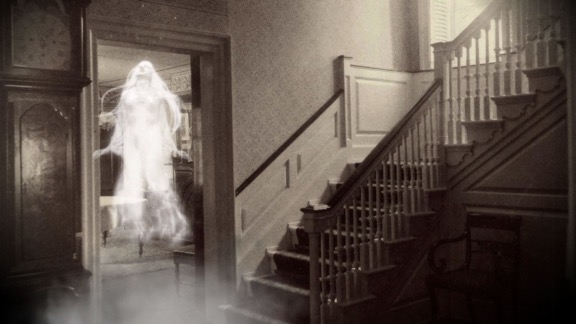
"I have been at work for some time building an apparatus to see if it is possible for personalities which have left this earth to communicate with us."
Thomas Edison, 1920
What if you nonchalantly recorded something around your house, let's say a music practice session. Then when you played it back, you clearly hear someone whispering. You didn't hear it when you recorded it, so what was it? Many unfamiliar sounds throughout history can be attributed to nature, machinery, and even hoaxes. As our post-industrial society grows, so does the list of unexplained sounds, like trumpet sounds from the sky, humming cities, and ocean whistles. The proliferation of audio and video technology has generated its own tally of the strange. Specifically, weird voices that have been inadvertently and unknowingly captured. These recordings and transmissions sound eerie but have a very unsexy-sounding name: "Electronic Voice Phenomenon," or EVP.
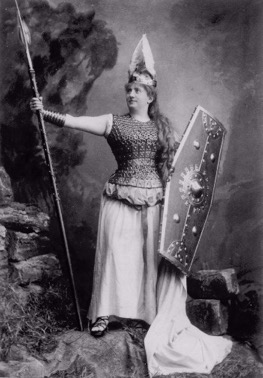
"The opera ain’t over until the fat lady sings."
Ralph Carpenter, Texas Tech Sports Information Director
Richard Wagner, the 19th century German composer, would have loved Star Wars. He may not have understood what a light saber or X-Wing fighter was, but he would get it - even with his eyes shut. That's because the Star Wars films are rich with composer John Williams' scores that employ a musical tool that Wagner himself was a master of: the leitmotif.
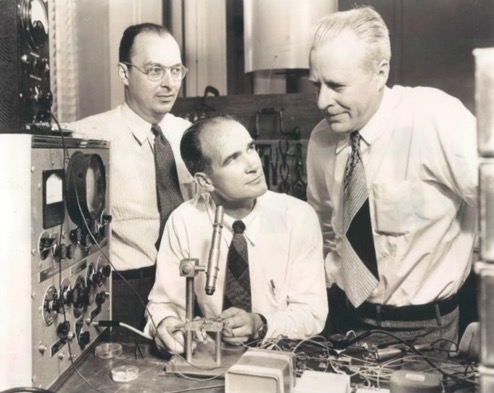
"If we knew what it was we were doing, it would not be called research, would it? "
Albert Einstein
Bell Labs was born more than a hundred years ago out of the need to improve the nascent telephone. It grew into a pure research facility that made an astounding number of scientific discoveries, improved or invented new technologies, and even influenced art and music.

"The rockets came like drums, beating in the night."
From "The Martian Chronicles" by Ray Bradbury
Walter Gripp is the last man on Mars. All the rockets to Earth have launched without him. One evening in a deserted town, he hears a phone ringing. This creepy scenario from Ray Bradbury's The Martian Chronicles has captured the fascination of science fiction fans for decades. The reader wonders, who could it be? The scientist wonders, what would it sound like? We're about to find out...maybe.
Read More...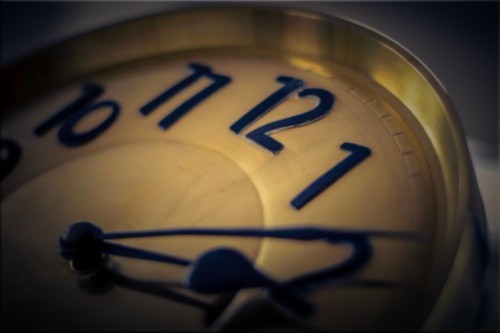
"Shh! Listen! Someone's coming! I think -- I think it might be us!"
J. K. ROWLING, Harry Potter and the Prisoner of Azkaban
Imagine if we could time travel without changing history. If we could go back 50 or 100 years would people view our technology as magic? If we were visited by time travelers from the future, would their technology be magic to us?

"Cooking is like music: you can tell when someone puts love into it.”
Taylor Hicks
The transition from mono to stereo music recordings in the late 1950s had its challenges. Find out how Rudy Van Gelder and other recording engineers worked out the details.
Read More...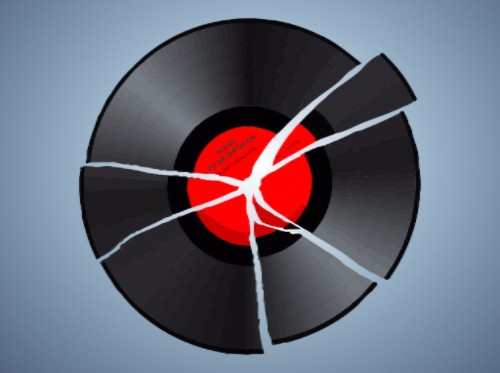
"Every crowd has a silver lining.”
P.T. Barnum
126.4 I think that's what will be inside a little oval sticker that I'm going to put on my bumper. I see "26.2" bumper stickers that marathon runners proudly display. Colorado mountain climbers have "14er" stickers. A lot of dads are number "1." Then what's so special about 126.4? It used to be a number for Kings, but now it's a number for Cats.
Before I start to sound like a broken record, let me back up and tell this story from the beginning. Team Cornett wanted to raise the profile of UK Health Care and their close association with UK Athletics, so they came up with a plan to get the attention of a sports crowd. There's no better place for a hyped up crowd than Rupp Arena in downtown Lexington. With nearly 24,000 people, its been known to get really loud in there. It would be the perfect place to try and break the world record for the loudest crowd roar at an indoor sports event. And what basketball game would have the biggest and loudest crowd? A made-for-ESPN-TV marquee matchup: Kentucky versus Kansas.

"The key to this plan is the giant laser. It was invented by the noted Cambridge physicist Dr. Parsons. Therefore, we shall call it the Alan Parsons Project."
Dr. Evil
Austin Powers
Here's something that will blow your mind and make you paranoid at the same time. Someone can listen to your conversations in your house or office from hundreds of feet away using light. The "light" is a "laser," and it's bounced off a window pane to detect sound vibrations. It's hard not to imagine Dr. Evil, played by Mike Meyers, air quoting "laser" when we mention that word. The theory was first proposed in the 1940s, but had to wait until lasers were actually invented in the 1960s to gain traction. By the 80s, the Cold War had us and the Soviets spying on each other using "lasers."
Read More...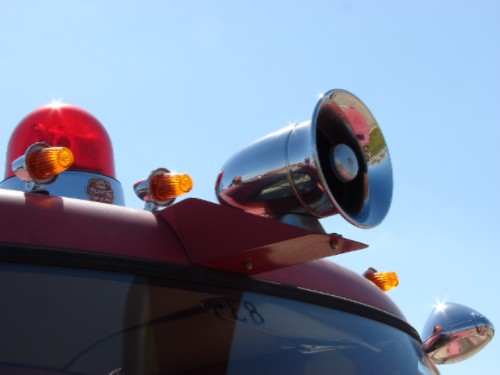
“Square in your ship's path are Sirens, crying beauty to bewitch men coasting by;
woe to the innocent who hears that sound!”
by Homer in The Odyssey
I live on a busy street. My house sits roughly between three hospitals - all with helipads and emergency rooms. That's good for me if I have a really bad day, but my poor cat thinks wolves are after her whenever someone else is having a really bad day. I'm talking about the incessant sirens going up and down my street. And they seem to be getting louder – they penetrate my windows and brick walls with even more ferocity than ever before. It turns out that I'm not imagining this, because some emergency vehicles are now employing something called "low frequency system," or LFS. I call it "Loud F*@#$%^& Siren."
In addition to the regular high yelp of a siren, you may have noticed a lower yelping sound that seems to penetrate your car and go straight through your chest. That emergency vehicle has a secondary siren system that emits powerful omnidirectional bass tones from about 200-400 Hz. In this range, sound is "felt" more than heard - up to 200 feet away. These frequencies can penetrate auto glass and metal, wood and brick buildings, and human flesh and bones.
The sellers of these types of sirens call them "intersection clearing" devices. They didn't make them just for fun, there is a real need for something to gets more attention. We live in a world of super-quiet cars, people with earbuds playing music loudly, pedestrians hunched over their phones while walking into fountains, and general inattentiveness. City dwellers in particular have learned to tune out the pervasive sirens that scream past them daily. There have been countless accidents, some fatal, at intersections while an emergency vehicle is on a Code 3 run. Police and fire departments are continually searching for solutions that make emergency runs efficient and safe for everybody, but it's an uphill climb.
This latest solution of using enhanced low frequency sounds is not without its controversy. Opponents complain of ever increasing noise pollution. They also bring up the lack of legislation regarding the use of LFS. For instance, many police and fire departments that are purchasing the LFS units are small towns without the traffic problems of big cities. People who live or work in cities that employ LFS sirens are subjected to particularly invasive sounds while inside a building, even on the 20th floor.
And these loud and low tones aren't just an annoyance, they can be harmful to your health. Noiseoff.org says "The intense sound caused by the [LFS] siren easily triggers an involuntary stress response commonly known as 'fight or flight.' This results in the secretion of adrenaline, with ensuing spikes in cardio-respiratory rates, muscle tension, and elevated blood pressure."
But let's not forget about the police officer or ambulance driver who is sitting on top of this thundering klaxon. At ten feet away, roughly the length of a pick-up truck, these sirens emit a powerful 123 dB-SPL. Let me put that in context for you. If you were standing at the goal line of a football field and a jetliner took off 65 yards away, you probably wouldn't notice that the jet was slightly louder than the siren because you would be screaming in agony from the pain. Makers of these LFS sirens don't recommend users subject themselves to more than ten seconds of the bone rattling sound, so they usually build in a failsafe cut-off time of the tone. But once it ends, nothing stops the operator from sounding it again and again.
Clearly, there needs to be more engagement between the public agencies and the public they're supposed to protect. An effort to educate both the protectors and the protected will only help everybody in the long run. These LFS sirens are getting the attention of people in the way, but at what cost? Will their overuse cause heart attacks, panic attacks, or deafness? If people then start to ignore these, will the police come up with something even louder? Like something that goes to 11?
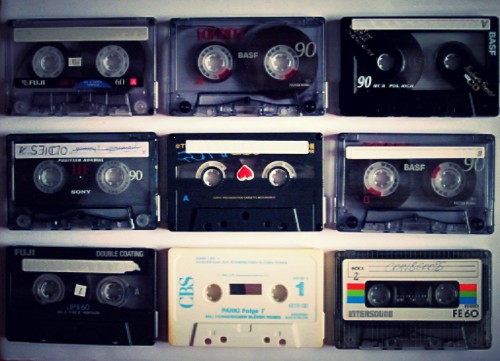
"I used to judge the quality of music by whether I could make a 90-minute cassette and not repeat any artists."
John Hughes
What? Another old audio format is making a comeback? Yessiree! If you want to be hip, then dust off your old Sony Walkman. But like me, you've probably dumped all your old cassettes along with your floppy disks and Trivial Pursuit. These days, my pocket can carry the same amount of music that drawers and drawers of cassettes can.
Read More...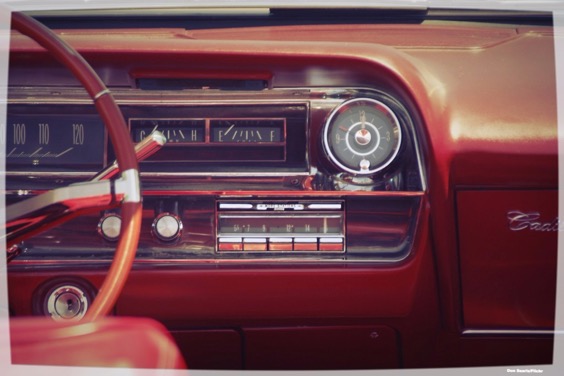
"I hate modern car radios. In my car, I don't even have a push-button radio. It's just got a dial and two knobs. Just AM."
Chris Isaak
Maybe you haven't noticed, but AM radio has pretty much sucked the last twenty years or so. Maybe you didn't notice because you weren't listening. A lot of people aren't, and the FCC is out to change that. The FCC? You bet – this isn't your father's FCC. We're so used to hearing "FCC" and "restrictions" in the same breath, that broadcasters were pleasantly surprised last October when the FCC announced an "AM Revitalization" initiative.
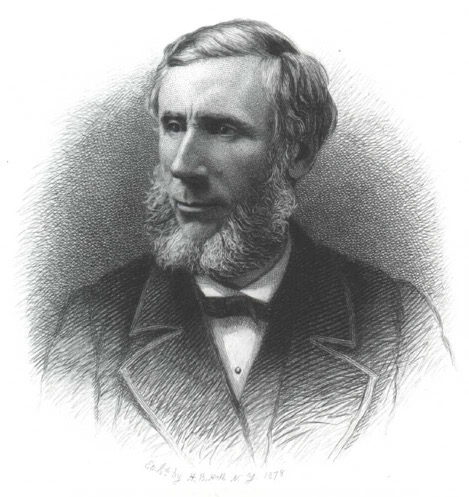
"I throw more power into my voice, and now the flame is extinguished"
Physicist John Tyndall, 1857
There's been a recent breakthrough in fighting fires - using sound waves to extinguish flames. Since 1857, scientists have known that sound waves could put out a flame, but they weren't exactly sure why.
Read More...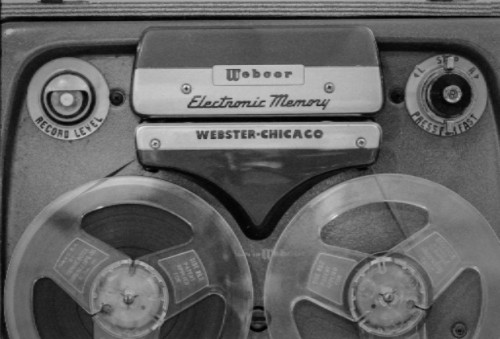
"As so much music is listened to via MP3 download, many will never experience the joy of analog playback, and for them, I feel sorry. They are missing out."
Henry Rollins
There's a growing trend in the music business - recording to reel-to-reel tape. Wait, I thought we got rid of that when we went digital. The truth is, it never went away. Much like the recent boom in sales of records and film, reel-to-reels are gaining new fans and bringing back old ones.
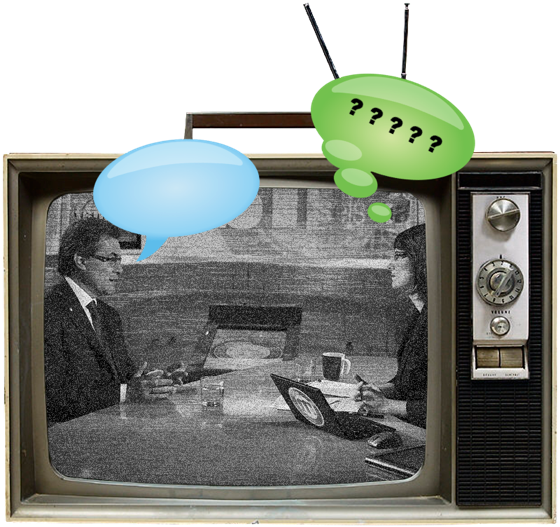
"I hope I inspire people who hear. Hearing people have the ability to remove barriers that prevent deaf people from achieving their dreams."
Marlee Matlin
Did you know that more than 37 million Americans aged 18 or older have some kind of hearing loss? And 30 million Americans aged 12 or older have hearing loss in both ears? With a media-rich society, that makes listening to narration, dialog, and speech in general difficult for them. Before 1972, anyone hard of hearing had to watch television with the volume turned up.
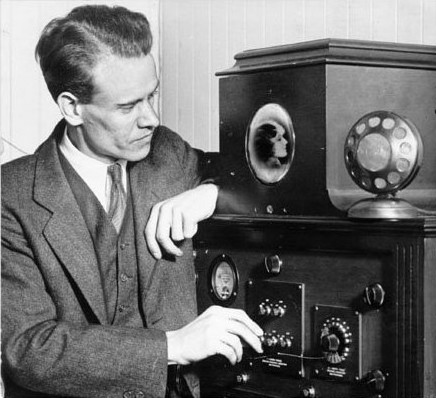
"If it weren't for Philo T. Farnsworth, inventor of television, we'd still be eating frozen radio dinners."
Johnny Carson
Eighty-six years ago, three musical tones, "G-E-C," were played on a fledgling network of radio stations. What started as a technical cue for local stations, has become an instantly recognized trio of notes woven into the American identity.
Read More...
"They number girl spies different. She's what you call a 36-23-36."
Max Baer, Jr. as "Jethro Bodine"

"Podcasting - I swear to you - on its worst day, the podcasts are better than our best films. Because they're more imaginative, and there's no artifice, and it's far more real."
Kevin Smith
Modern podcasting has now been around since about 2005. The roots go back much further, into the 1980's in fact. The idea of subscribing to an internet-delivered audio service dates to the early 1990's. But it wasn't until portable devices, such as the iPod, came onto the scene that it really took off. History shows that portability drives popularity – the battery-operated radio, the portable record player, the audio cassette, and the funky 8-track. I remember the iPod being described as a digital "Walkman," even though poor Sony already had moved beyond the cassette into portable digital players.
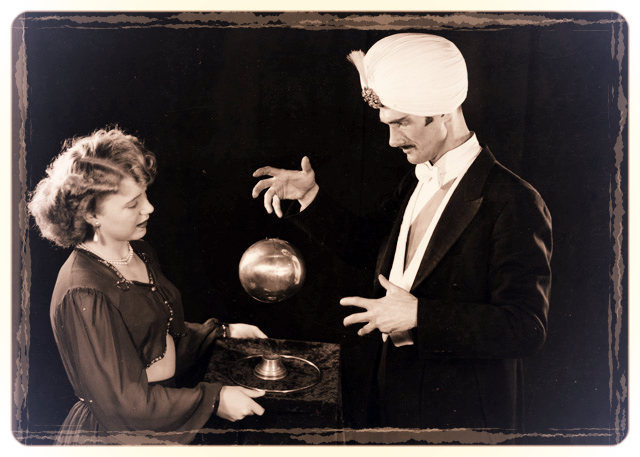
"Science is magic that works"
Kurt Vonnegut
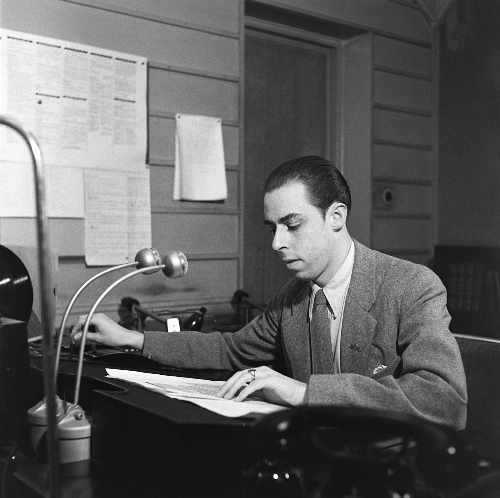
"In radio, they say, nothing happens until the announcer says it happens."
Ernie Harwell
Legendary Detroit Tigers Announcer
There was a time when Americans who wanted to sound important and upper class spoke with a half-American, half-British accent. They call it mid-Atlantic, presumably because the accent lands somewhere in the middle of the ocean between our countries. It was dominant in movies, on radio, in theaters, and on early television. Today, it sounds pompous. Some early practitioners were Franklin Roosevelt, James Cagney, Orson Wells, and Katherine Hepburn. Some more contemporary holdouts were William F. Buckley, George Plimpton, and Jacqueline Kennedy Onassis.

"Words mean more than what is set down on paper. It takes the human voice to infuse them with deeper meaning."
Maya Angelou

“Even if you're on the right track, you'll get run over if you just sit there.”
Will Rogers
It's said that when an early motion picture was first shown to the public, women fainted and men ducked from an approaching train. The director made a bold new decision that would alter the course of filmmaking for the next century. Instead of just placing the camera in front of all the action like an audience watching a stage, the director moved the camera to a new position - within the action - to create perspective. There were more changes on the way. About a hundred years ago, the first color and 3D films were being created. In an Avant Garde era when artists were distorting reality, most filmmakers were trying to recreate reality and immerse the viewers into it.
Read More...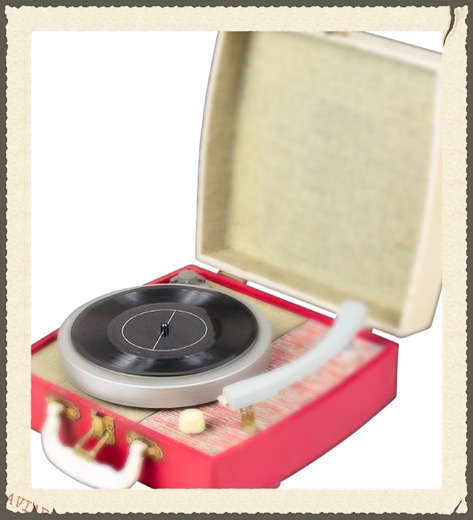
The new generation is discovering what the old generation stopped loving - LPs. LP sales are the highs they’ve been in 22 years. Records aren’t just for hipsters anymore, everyone, including the older generation that gave them up, are groovin’ to them.
Read More...
“Within You Without You,” The Beatles
1967
How would you describe a sound to someone without using descriptors that are unique to sound, like: loud, bassy, shrill, whining, atonal, or noisy?
Not a problem, because we most often describe a sonic experience with words related to our other senses: sharp, warm, angular, raspy, piercing, even, warbling, soft, smooth, or flat.
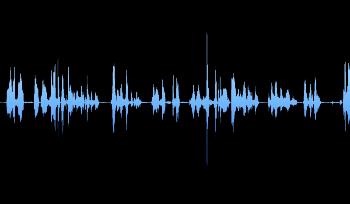
It's often assumed that someone with a visual impairment, such as blindness, has better hearing. While this person may collect more audible information than most of us, there is no physical advantage over someone with sight. That information is collected by the brain. That person has trained themselves to rely more on the remaining senses.
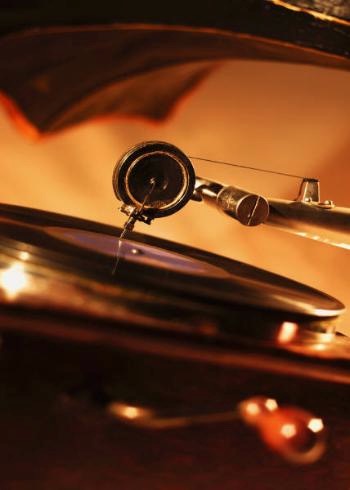
Most of you reading this know us at Dynamix for creating new sounds with new technology. But did you know we also like to resurrect old sounds? Just twenty years ago, magnetic tapes and records were standard formats we worked with everyday. Now, they're just "antiques" and items taking up space in a closet. But many people are discovering (or re-discovering) analog, and they want it in digital form. For many years, we have been helping people resurrect old recordings by transferring their tapes and records to CD. Many of these analog recordings are of family, but others are important historical archives.
Our main challenge when restoring an old recording is improving the condition of the archive enough to capture an audio signal. Scratches on an old record are obvious, but many are warped, dusty, oily, and even muddy. Reel-to-reel tapes often exhibit "shedding," where the magnetic coating flakes off the acetate base as you play it, destroying it forever. Although not all recordings are recoverable, we've had great success with most. Tapes can be "baked," or slow-heated and slow-cooled to temporarily restore the adhesive that holds the magnetic coating on. Records can be cleaned, and if warped, flattened.
We have a multitude of analog equipment for transferring old recordings, including:

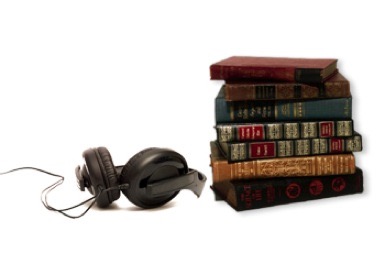
Audio books, or what used to be called "books-on-tape," are gaining in popularity now that listeners can easily download them to their portable listening device. In the old days, you had to fumble with a box of tapes or CDs. Now, thanks to software like iTunes, you put a whole library in your pocket. The ease of getting an audio book is exponentially easier with on-line stores like iTunes, Amazon, and Audible. Just like the print market, there's an audio book for just about anything. If you want a book for self-help, do-it-yourself, travel, humor, history, etc., it's out there. And the line between audio books and audio programs is dissolving.

The volume is getting turned down on television commercials. What does that mean for you, the producer or advertiser? Well, you can still scream all you want, but you just won't be louder than the latest installment of a Fast and Furious movie.

Independence Day reminds me about fireworks. Which reminds me of explosions. Which remind me of sound effects. I'm not necessarily thinking of sound effects when I'm watching fireworks, because I'm usually in the moment. But we've all experienced that anticipation of waiting for the next explosion when we see a faint streak of light climb up to the heavens and hear a little bit of the sizzle from the propulsion. A momentary silence...and then BOOM! Ooooh! Aaaah! Laughter, applause.

A jam-packed field. Each running neck-and-neck trying to lead the pack. The whole mass moving toward the finish line with breathtaking speed. Finally it ends, but it's too close to call!!!
No, it's not the Kentucky Derby. It's an overcrowded commercial with too much information that's been crammed into 30 seconds. Sound familiar? We all want to get our message across, but we often say too much. I'm guilty of it (as many of my friends would attest).
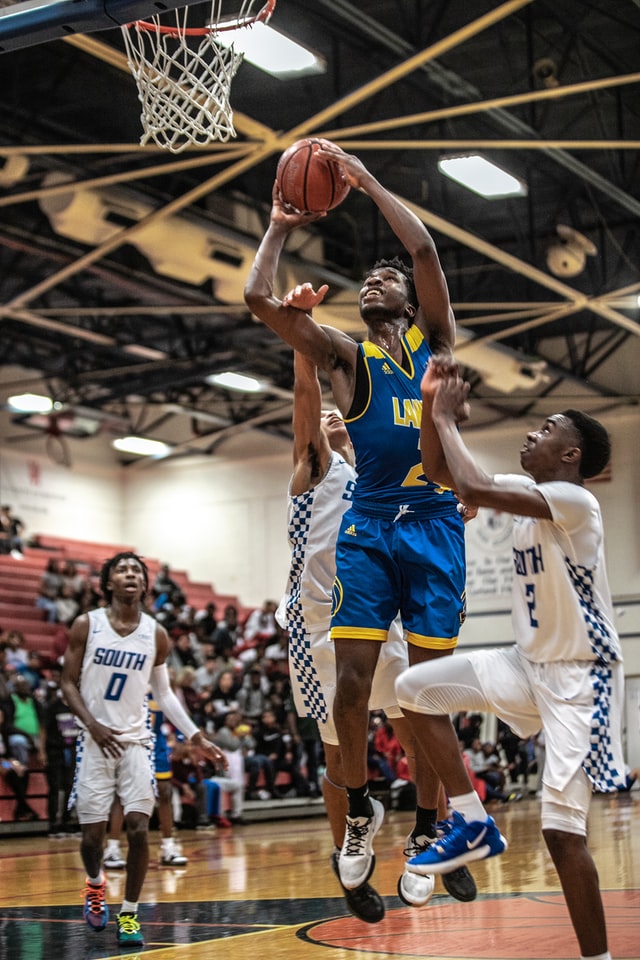
With the recent college basketball championships engulfing our March, it's easy to see what it takes to make a winner: teamwork. Okay, I know it sounds cliché, but it's the same in production. If a coach only relies on one player, then the team will eventually fail. Everyone sees the other players just standing around and "phoning it in." What would you think? "Good player, but this team could be so much more." What about "Good video, but it could be so much more."
Read More...
Most productions that go through our studios at Dynamix have some kind of music. It can be a jingle, custom, or library ("needledrop") music. A jingle can be great for branding your client over the long term. But, it's usually the most expensive item in your production budget, sometimes the only item. If you're producing a film, custom music can give cohesiveness to the soundtrack, but can also be expensive - sometimes as much as 15% of your total budget. That's why many projects that have a quick turnaround or tight budget lean towards using library music.
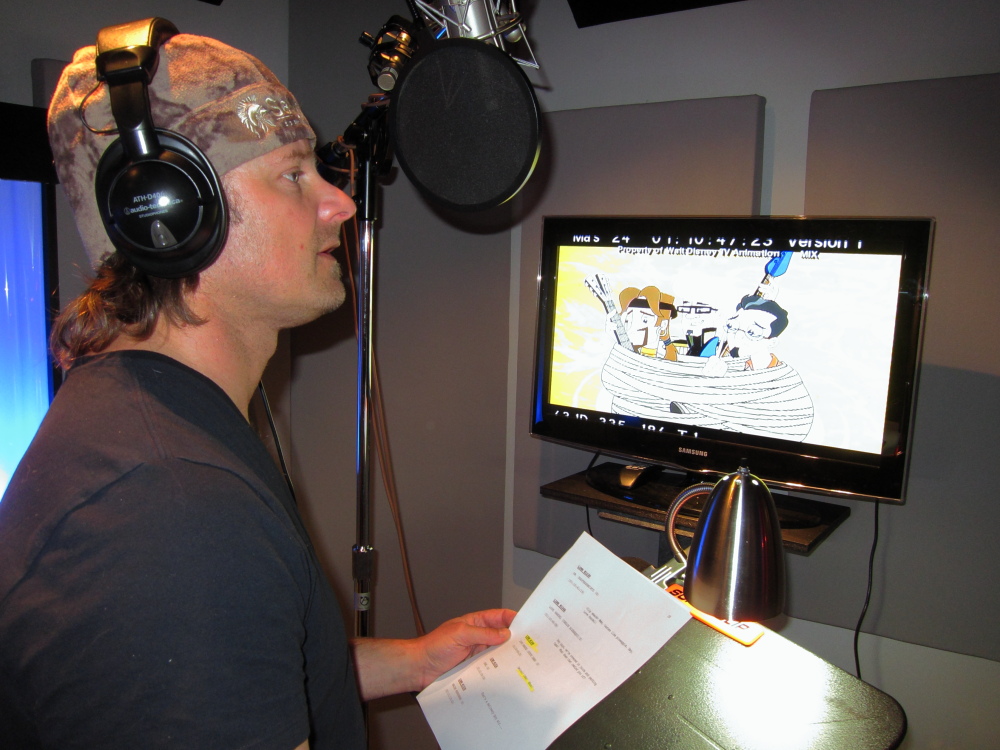
Replacing dialog in video and film has come a long way since Clint Eastwood had to dub dialog for his spaghetti westerns. Whether it's noise in the original track, a changed or new line, or even a different performance, replacing dialog on programs and films is commonplace today.
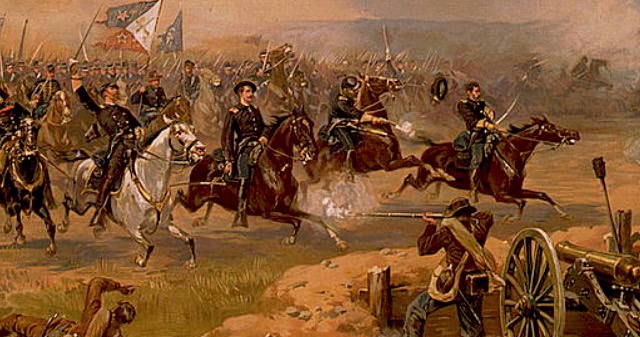
Being in the "Horse Capital of the World," we surely have enough experience to know that a horse sounds much like it did 150 years ago. However, back then a horse's role was very different than today. In a new documentary, "Unsung Hero: The Horse in the Civil War," produced by Witnessing History, LLC for HRTV (Horse Racing TV Network), the role of the horse in the American Civil War is explored in-depth with rarely-seen photographs, documents and artwork. To a sound designer's delight, there are simulated battle scenes, troop movements, and other war action.

One often overlooked service that Dynamix Productions provides on a regular basis is ISDN (see below for a more detailed explanation). It's a real-time digital audio connection that allows two or more studios to deliver near CD audio quality to each other simultaneously. We regularly connect with other studios around the world for voice-over sessions.
Read More...